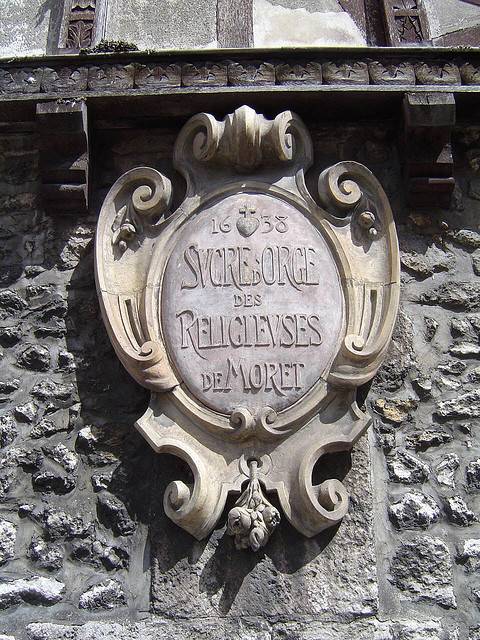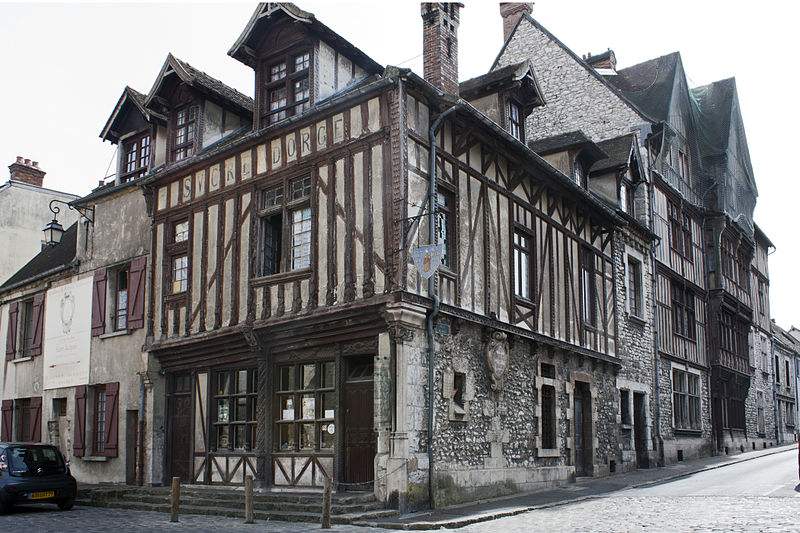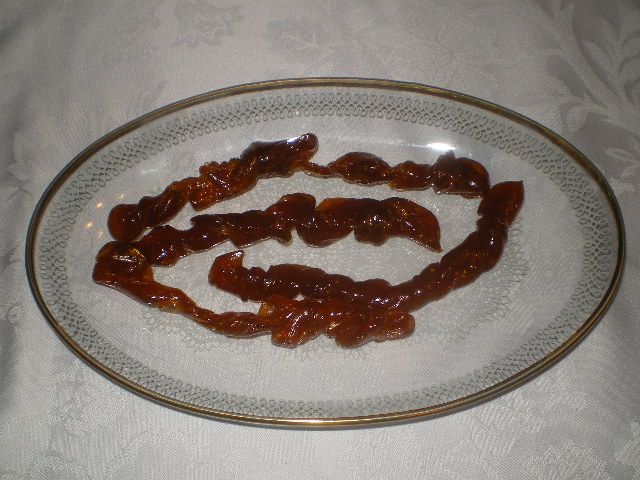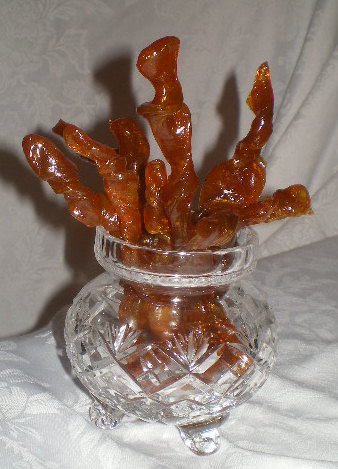In 1638, Mother Elisabeth Pidoux, cousin of the French literary genius La Fontaine, invented barley sugar. In the Benedictine tradition, she was experimenting with sugar and barley, while striving to create medications that would alleviate the plight of the sick. Her invention made the Benedictine Priory of Our Lady of the Angels at Moret-sur-Loing famous, especially when their very original creation became a favorite at the Royal Court.
Like the nobility, art, social graces, and culture in general, this Benedictine priory saw days of glory during the reign of Louis XIV, the Sun-King, but like these, it too withered and perished under the pestilential Jacobin breath during the French Revolution. In 1792, all production of this beloved treat came to a halt and the nuns themselves scattered. The religious community foundered and the Priory was deserted in the stormy seas of social upheaval. One nun kept the culinary secret though.

A decorated tin showing Moret sur Loing with Barley Sugar inside, one of the many ways this candy is sold.
Years later, Sister Félicité was able to return and re-establish herself at Moret. Before dying, she asked a friend to keep her secret. This friend did not betray Sister Félicité’s dying trust. Once religious life was restored, and France staggered back to its feet after the blood-drenched decades of its egalitarian Revolution, she confided the secret to the new Benedictine community that established itself at Moret, and production of barley sugar resumed.
In the 1970s, when new troubles assailed them, the Benedictine sisters passed their precious secret on to the confectioner Jean Rousseau, whose business has carried on this delightful tradition until today .
Barley Sugar Recipe
INGREDIENTS
2 Cups White Sugar
2/3 Cup of Water
1 Lemon * (see note below)
Zest from this Lemon *
¼ teaspoon Cream of Tartar
IMPORTANT: Please read the entire recipe before starting!
TOOLS
Candy Thermometer
Tray, cookie sheet or anything else that has an edge on it to keep the liquid candy in while it cools.
Spatula that is heat resistant
A flipper, palette knife or a metal (cake) icing spreader
Medium-sized pan
A metal bowl larger than the pan you are cooking in filled with about 2” of iced cold water.
A glass tray, wax paper or a dish. You will need this when you are taking the cooling candy off of the cookie sheet, so you can twist the candy. It helps cool the candy.
Kitchen scissors
Before you start cooking, do these steps first!
1. Use a cookie sheet or tray that isn’t in great shape. Spray or oil the sheet and a spatula/flipper. Put something underneath it to protect your countertop if need be.
2. Roll one lemon, to loosen the juice and remove the lemon peel. If you use a citrus zester, cut the strips of lemon peel into smaller sizes. Don’t leave them long strips. Reserve the lemon peel. Cut the lemon in half, squeeze and reserve the juice separately from the peel.
MAKING the CANDY
Do not attach the candy thermometer yet. In a medium-sized pan, add the sugar and water, stirring over a low heat, till the sugar has dissolved fully. (The dial on your stove should be at 6 for now.) If the sugar is dissolved, the liquid will be clear. Make sure the burner size is not larger than the pan. You need even heating.
Add the lemon zest and cream of tartar, raise the heat (raise the dial to 8 & no higher), clip on the candy thermometer to the side of the pan, and cook until it reaches 240°F (116°C). You do not need to keep stirring at this point.
Once it reaches 240°F (116°C) stir in the lemon juice and continue cooking until it reaches 310°F (154°C). Keep an eye on it, since as it nears 310°F (154°C), it will get dark. Just be careful it doesn’t burn at this point. As soon as it reaches 310°F (154°C), quickly remove the pan from the heat. Carefully (since it will boil) dip the base of the pan briefly into the cold water you had reserved nearby. Quickly pour the syrup out onto the prepared cookie sheet/tray, scraping the sides of the pan with the spatula.
Allow the syrup to cool a little until it stiffens at the edges and begins to form a skin. Use the oiled palette knife/spreader to lift one edge of the hardening puddle and fold it into the center. Keep folding and moving the syrup into the middle to form a “rectangle” that is not too thick. Cut (either with the scissors or the knife) the candy into narrow strips and remove from cookie sheet to the waxed paper. As soon as it is cool enough to work with but before it sets completely, twist each strip. Let them cool completely before storing them in a tin. Tubberware or any other plastic container does not work for this candy. You do not need to wrap them individually or dust them with powdered sugar. Just make sure they are cool before storing.
*You can substitute the lemon & lemon peel, for an orange & orange peel. Anise liquor and orange liquor can be used in place of the juice, but only use 2 Tablespoons. Any more than that will give it a burnt flavor. The liquor doesn’t have the same robust flavor as the juice, but it is an alternative.











